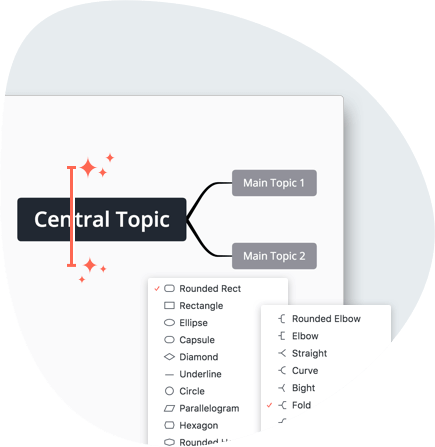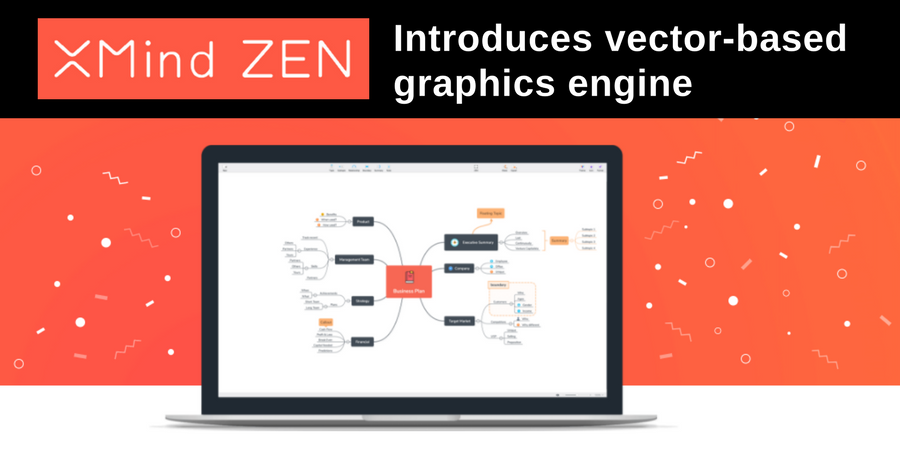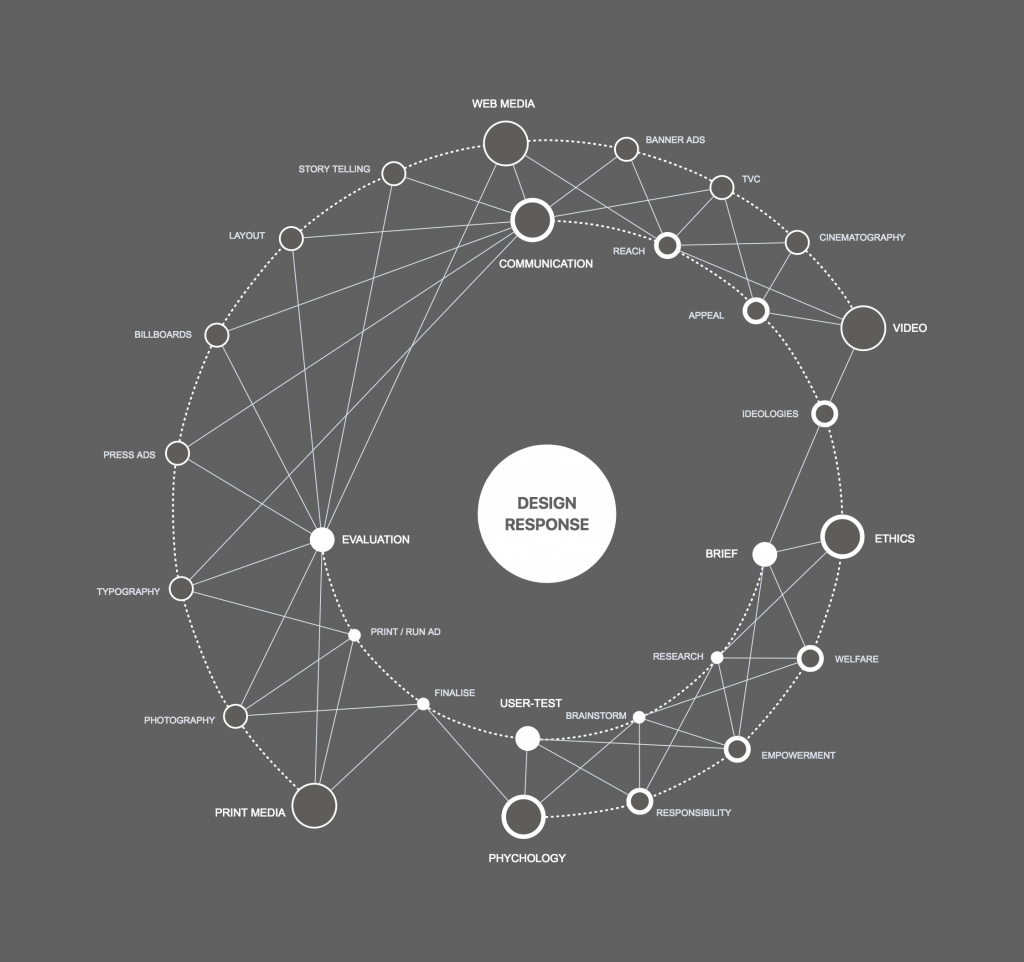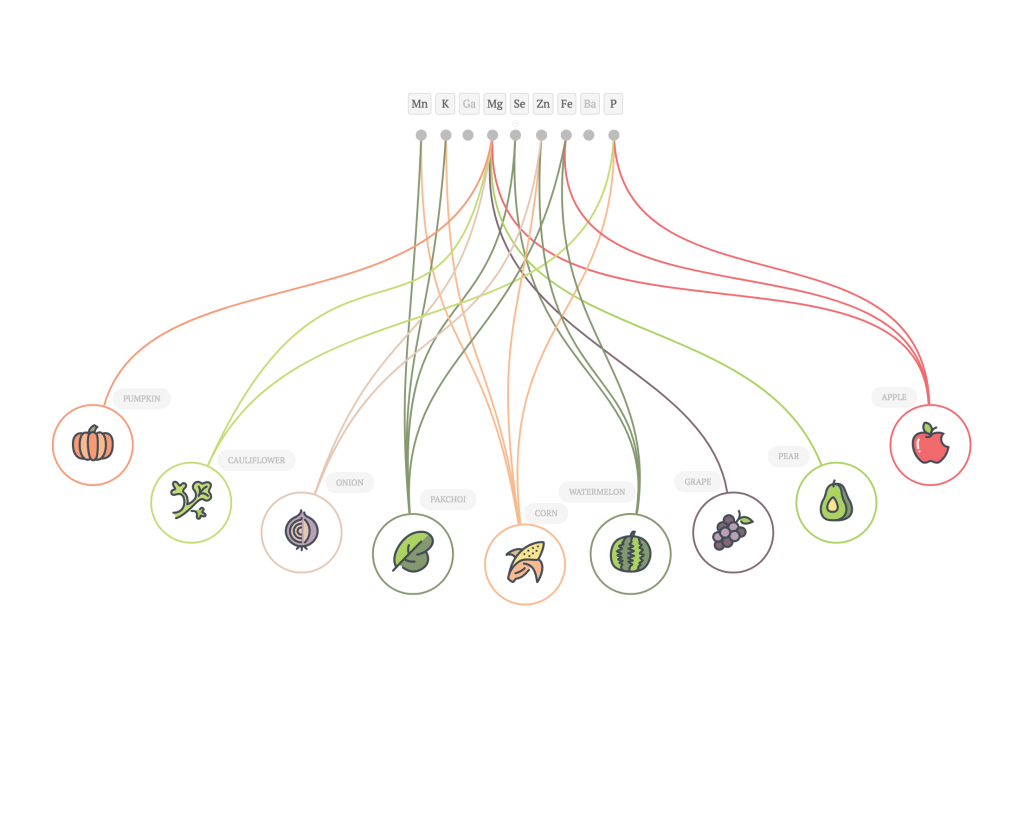 One of the big challenges nearly every developer of mind mapping software has faced during the last decade is selecting a unified platform that enable it to create one set of code that can be deployed across all computing platforms – desktop, mobile and web. Most recently, XMind has reached this plateau. Its answer to the challenge is XMIND Zen, a new mind mapping platform that’s based on SVG, a scalable vector graphics format.
One of the big challenges nearly every developer of mind mapping software has faced during the last decade is selecting a unified platform that enable it to create one set of code that can be deployed across all computing platforms – desktop, mobile and web. Most recently, XMind has reached this plateau. Its answer to the challenge is XMIND Zen, a new mind mapping platform that’s based on SVG, a scalable vector graphics format.
I recently talked with XMind cofounder and senior vice president Stephen Zhu to learn more about XMIND ZEN and the future of this popular mind mapping program.
Chuck Frey: Where did the idea for XMind ZEN come from?
Stephen Zhu: In the past few years, the framework of XMind has been based on Eclipse, which in turn is based on Java. Java has some inherent limitations in terms of memory management. Also, it’s not designed to support mobile computing platforms. This framework did help us to build XMind into the successful program it is today. But we were starting to run into its limitations. We also discovered that some users encountered instability with Java. So we decided to replace it with something more stable and scalable.
We’ve invested the last 3 years rewriting the XMind engine in SVG technic, a vector-based graphics rendering technology that enables you to enlarge the mind map freely without any loss in quality. We call this new mind mapping engine “Snowbrush.”
Compared with other programming languages used to build mind mapping software, this platform has fewer limitations and gives us more flexibility to expand from here. Our team believes it’s a superior foundation for the future of XMind.
We believe XMind ZEN has many other shining points as well: The map themes have a fresh look. The program includes 89 new stickers and a user-friendly design. Even a first-time user can operate it easily.
ZEN refers to your ability to deeply concentrate. Our XMind team has focused only on mind mapping software for 12 years now. We want to bring users a more concentrated or focused feeling when they’re creating mind maps.
Frey: Your XMind ZEN web page talks about focusing on “future ‘black’ technologies.” What do you mean by this? Can you give me an example of a black technology that is incorporated into XMind ZEN?
 Zhu: Snowbrush is an all-new graphics engine that gives XMind Zen a lot of power and flexibility. Its graphics performance is outstanding. Also, it is compatible with all devices, whether in iOS or web, all SVG. That’s what we intended when we created it.
Zhu: Snowbrush is an all-new graphics engine that gives XMind Zen a lot of power and flexibility. Its graphics performance is outstanding. Also, it is compatible with all devices, whether in iOS or web, all SVG. That’s what we intended when we created it.
By rendering mind maps using SVG, all the elements in a mind map display perfectly at every resolution, including lines, themes, diagrams and other visual elements. SVG opens up many more possibilities in graphics and animations, which we haven’t even begun to explore.
We believe SVG is one of the “black” technologies the will drive mind mapping into some exciting new areas in the future. It’s an exciting time for XMind.
Frey: Will you offer XMind in both the regular and ZEN versions? In other words, two mind mapping programs? Or will it eventually replace XMind 8 PRO?
Zhu: So far, we believe XMind 8 won’t be replaced by XMind ZEN. The users of XMind 8 and XMind ZEN have different use habits and different needs in their mind mapping software. XMind 8 is designed for heavy use by business people. They demand more professional features, like project management.
We believe XMind ZEN users’ needs are more basic. But they are still business people who need to be able to gather, organize, distill and share their ideas.
Comparing to XMind 8, XMind ZEN does not contain some professional features like audio notes, GANTT chart, slide-based presentation and brainstorming. However, these features will eventually be added to XMind Zen, built using the Snowbrush engine.
Frey: The pictures you’re showing in the blog post to announce that XMind ZEN is now in private beta testing show some unusual and beautiful diagram designs? What are they, and how are they to be used?
Zhu: Xmind ZEN contains not only the structures (fishbone, matrix, logic charts, etc.) we originally provided in Xmind, but also its free drawing capability enables you to create some unique and beautiful diagrams. You can also use floating topics and relationship lines to create some unique effects.
Actually, these maps came from users of Xmind ZEN. They have fully unleashed their imagination and productivity to create these beautiful mind maps using floating topics and relationship lines in some unique ways. Our users use their talent and practice to prove XMind not just for mind mapping.
In addition to the beautiful new map views in XMind ZEN, what else is new in this new program?
XMind ZEN has:
- 30 all-new themes, which are designed to help users with many different types of scenarios no matter you are a student or a businessman,
- 89 original stickers
- Export to .md (markdown) format, which is a powerful plain text formatting syntax, and
- ZEN mode.
This last new feature is perfect for organizing your ideas. When you’re operating in ZEN mode, all the extras panels surround the workspace will automatically hide. That can help you to concentrate on your mind map.
Frey: Let’s say I’m a business user of XMind PRO. Why should I invest in XMind ZEN?
Zhu: Comparing to XMind 8, XMind ZEN does not contain some professional features like audio notes, Gantt Chart, slide-based presentation and brainstorming. If you are a heavy user of these features, then XMind 8 is all you need.
If not, and you have a passion to make beautiful mind maps, then we strongly recommend XMind ZEN. With a more powerful graphics engine, the program’s performance is greatly enhanced. Also, with the same powerful engine, you can enjoy the same mind map experience on your iPhone/iPad.
Frey: What’s the timetable for the launch of XMind ZEN?
Zhu: We launched the public beta in the middle of November, and final release the official version will be coming soon. Watch our Facebook or Twitter feeds for details!
Frey: What else should readers of the Mind Mapping Software Blog know about XMind ZEN?
Zhu: Both XMind 8 and XMind ZEN formats are completely compatible. All the graphical features in XMind 8 are perfectly consummated in XMind ZEN. Furthermore, XMind ZEN also supports to export files from Mindmanager, Novamind, Freemind and Lighten.
XMind for iOS is coming soon as well. The iOS version uses the same Snowbrush engine as XMind ZEN. It provides a seamless experience on all your devices.
XMind ZEN can export your mind maps to PDF and Evernote formats. Saving your mind maps as vector PDF files enables you to enlarge them as needed and print them clearly. Evernote fans will be delighted to find that XMind ZEN supports sharing their mind maps to Evernote directly with just a few clicks.
Finally, if you have any questions about Xmind ZEN, please contact us!
To download XMind ZEN Beta for Windows 7 64-bit and newer, please click here.




Leave a Reply